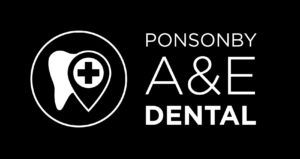
Dental Implants
Whether replacing one missing tooth or several, dental implants are an essential solution to restoring and maintaining dental health.
Beautiful smile and the confidence that comes with it is unmatched!
People who miss a tooth or multiple teeth often experience a lower quality of daily life—simple activities such as eating, speaking or even smiling become a stressful and uncomfortable task.
Dental implants are the solution for people who are missing teeth. They have the functionality of natural teeth.
What’s more, is that dental implants look and feel like your natural teeth.
Dental implants are made of a biocompatible material that is surgically inserted into the jawbone to act as an anchor for replacement teeth. The implant fuses to the jawbone with time, enabling replacement teeth to be permanently fastened in place.
Implant-supported bridge.
An implant-supported bridge is a restorative solution for spaces where more than one adjacent teeth are missing. The bridge replaces multiple adjacent missing teeth without the use of a denture. This restoration typically requires two implants to support the porcelain bridge. The bridge provides a functional and aesthetic replacement for the patient’s natural teeth.
Implant-supported denture.
Implant-supported dentures can be either fixed or removable. This solution requires the placement of two or more implants. If a removable denture is selected, the denture will “snap” on to the implant rather than requiring the use of denture paste or adhesives. Removable dentures can be taken out for cleaning at night.
Guided-Implant placement.
CBCT guided, Computer-assisted, template-based implant placement is the latest in implant dentistry. Using CBCT scans and restorative virtual treatment planning, along with specialized training, we can provide guided implant placement for our patients. Using a virtual 3-D model or a physical model, implant placements, and the following restorative work can be simulated to create the ideal patient treatment plan. These virtual plans allow the doctor to take multiple aspects of implant placement and restoration into consideration, resulting in optimal aesthetics, function and longevity for the patient’s final restoration. Working with a 3-D model also allows the patient to better understand the procedures and visualize the end result.
Need to Know
Appointments
- Multiple appointments.
Duration
- Varies. Consult with dentist.
Recovery Time
- Two days after implants surgery.
Benefits
- Implants look and behave like natural teeth.
Conditions
- Missing tooth/teeth.
Before Appointment
- Need proper exam and consultation with dentist. Success of implant is multifactorial, need proper planning to ensure the success of the implant.
After Appointment
- Following the advised aftercare regime.
- Oral Hygiene is critical.
Related Doctors
Fees
- Starting from $5,000 to $6,000
Frequently Asked Questions
Dental implants replace the entire structure of your missing tooth. Each dental implant is surgically placed beneath the gum line, where the jaw bone grows around the titanium post in the process known as osseointegration. After the dental implant and the bone have integrated together, the post is sturdy enough to support the new tooth for years to come.
Most people are good candidates for dental implants. Your oral and medical wellbeing determines the success of the procedure.


